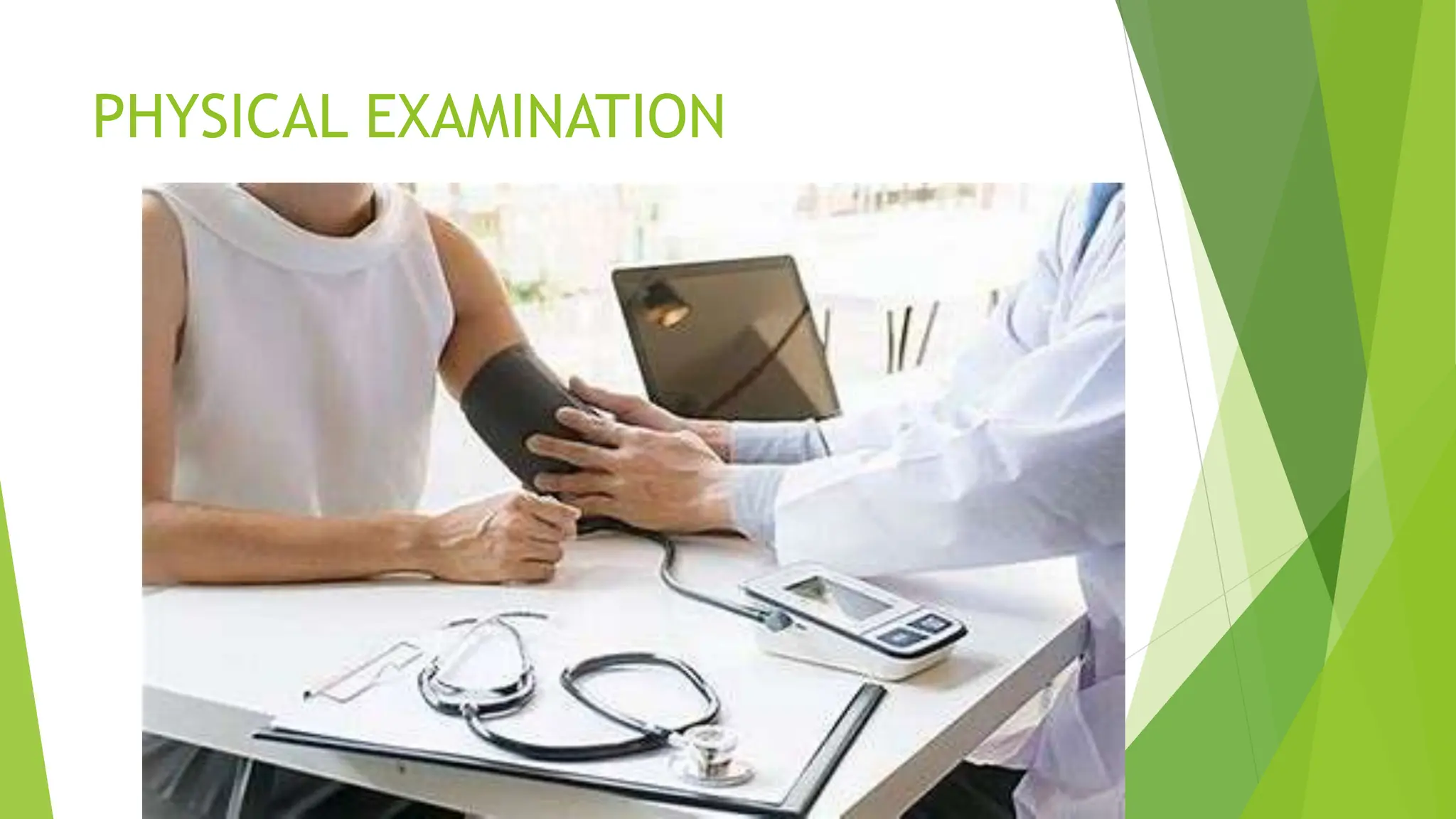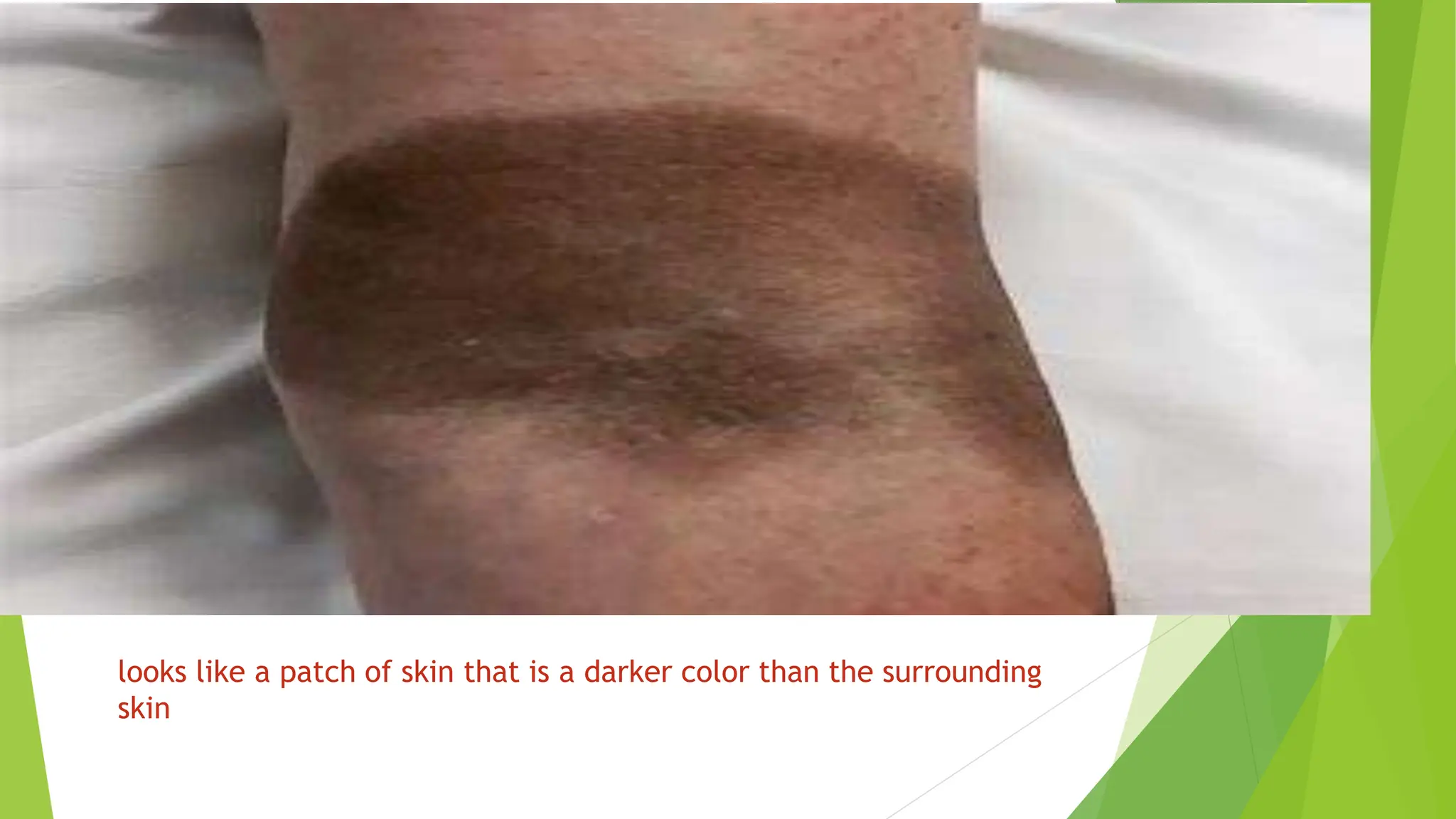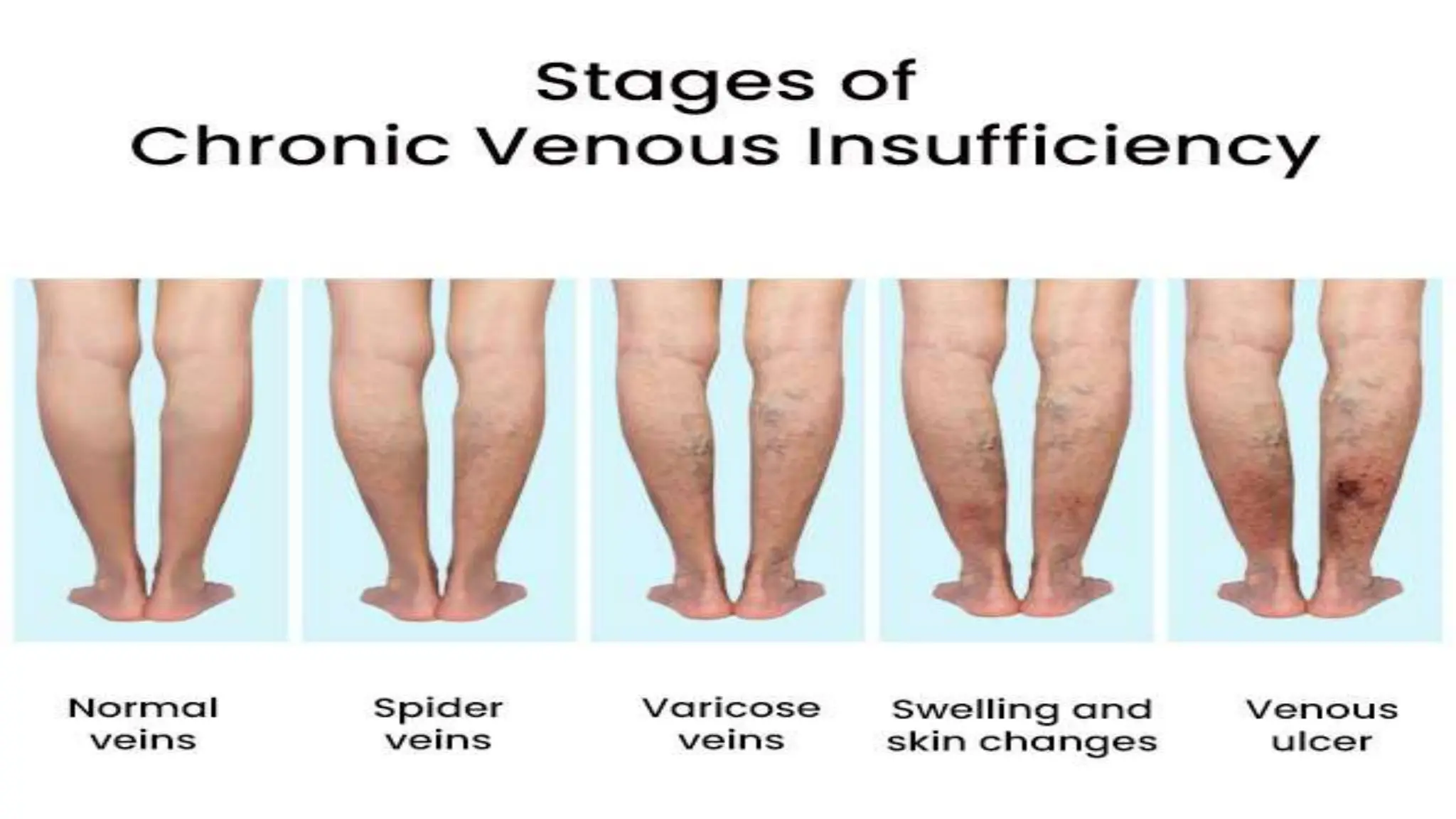The document presents a seminar on peripheral vascular assessment, highlighting the structure and function of the peripheral vascular system, including arteries, veins, and the lymphatic system. It explores clinical assessments, signs and symptoms of peripheral vascular diseases, diagnostic methods, and risk factors such as age, occupation, and medical history. Additionally, it addresses diagnostic techniques and concludes with a reference to a study on sarcopenia in peripheral arterial disease.


























































![The distal finger is kept hard pressed to stop the rebound pulse
coming from the palm[due to radial and ulnar arch, commonly
called as palmar arch]](https://image.slidesharecdn.com/peripheralvascularexamination2-240501150620-2cc47b2f/75/Peripheral-vascular-examination-2-pptx-59-2048.jpg)























































![BIBLIOGRAPHY
1. Suddharth &Brunner. Textbook of Medical Surgical Nursing, 13th edition: Wolter
Kluwer publication; 2014.pgno 1450-1460.
2.Black JM, Hawks JH. Medical Surgical Nursing, 1st edition : Elseiver
publication;2019. pgno 1458-1489.
3. Woods LS, FroelicherE , Cardiac Nursing.6th edition :Wolters Kluwer
publication;2009.pgno 936-939
4.Kaur L, Kaur p. Adult Medical Surgical Nursing ,3rd edition :Lotus
publication;2008 .pgno [1080-98]
5. Workman, Ignatavicus. Medical Surgical Nursing,7th edition :Evolve
publication;2009 .pgno [1080-98]](https://image.slidesharecdn.com/peripheralvascularexamination2-240501150620-2cc47b2f/75/Peripheral-vascular-examination-2-pptx-115-2048.jpg)

